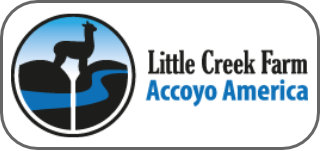- What are we afraid of? - Is the procedure safe for the animals? - Is doing ET ethical? - Do the costs and difficulty of the technology make it only practical for the larger, wealthier farms? - And if so, is it fair? - Does using ET decrease the variability of the gene pool and is it going to increase inbreeding? - If ET improves the fiber quality across the national herd, do alpacas become just a fiber industry? If so, where is the value in breeding the animals? - Isn’t ET going to flood the market with alpacas? The answers for many of these questions can be found by observing what has happened with other livestock industries that utilize ET, and by instituting some important guidelines. more »
- Embryo transfer in camels was initiated to respond to demand from the camel industry particularly in the United Arab Emirates since 1990. This paper reviews the research performed in critical areas of reproductive physiology and reproductive function evaluation that constitute a pre-requisite for a successful embryo transfer program. A description of donor and recipient management as well as a retrospective evaluation of calf production in the embryo transfer program at Sweihan, UAE is provided. The program utilized two management systems for donors, with and without ovarian superstimulation. Non-stimulated donors are flushed every 14–15 days with a mean embryo production per year per female of 8.5 ± 3.1 (mean ± SEM). Response to gonadotropin stimulation is extremely variable. FSH doses and frequency of administration is often adjusted to a specific female. In the period of 1990–2010, 11,477 embryos were transferred to recipients. Transfers from 1990 to 2009 (n = 10,600) resulted in 2858 weaned calves, representing an overall efficiency (% weaned calves/transfer) of 27%. Pregnancy rates at 60 days post transfer varied from 19 to 44%. Pregnancy length following transfer is extremely variable. A major challenge in a large embryo transfer program is finding good quality recipients. Causes of pregnancy and neonatal losses are under study. more »
- Reproductive physiology and procreation has always fascinated human kind. Therefore, it is not surprising that scientific research in reproduction is one of the oldest and most established field in biology. Advancement in reproductive sciences has been possible because of the curiosity of scientists of various backgrounds (biologists, animal scientists, and veterinarians). At the turn of the twentieth century, advances in reproductive research were mostly driven by needs for improved animal production and prevention of venereal diseases. The body of knowledge in animal reproduction has seen an exponential growth in the last 50 years. In recent years, the field of study expanded beyond laboratory species and production animals to include wildlife conservation and management. As this field of research grew, scientists felt the importance of organizing in international societies dedicated to this area. One of the oldest of these societies is the Society for the Study of Reproduction. In the veterinary field, reproductive physiology and pathology became known as “Theriogenology” thanks to the efforts of the founding members of a veterinary specialty under the name of the American College of Theriogenologists, recognized in 1971 by the American Veterinary Medical Association as an integral part of the veterinary curriculum (1). Similar specialty colleges were also started in Europe (European College of Animal Reproduction), Australia, and New Zealand (College of Veterinary Scientists, Animal Reproduction). In addition to these specialty colleges, other international societies have emerged including Society for Theriogenology, International Embryo Transfer Society, European Society for Domestic Animal Reproduction, and European Society for Small Animal Reproduction. All these society have now well-established regular meetings to provide a forum for communication of recent research and their application to the health and welfare of animals. This paper attempts to highlight some of the major milestones and challenges in reproductive research. more »
- Disorders of the digestive system are among the leading causes of morbidity and mortality in New World camelids, accounting for approximately one quarter of both fatal and nonfatal illnesses in these species. In spite of our recognition of the importance of these disorders, the number of reports on the diseases of this system is still relatively small, and some important, common disorders remain sketchily described, if at all, in the primary scientific literature. Veterinarians presented with a sick camelid often are forced to extrapolate from experiences with other species to determine whether the disorders are gastrointestinal (GI) in origin, to establish lists of differential diagnoses, and to formulate diagnostic and treatment plans. more »
- Dystocia in the camelids is rare, however the exceptionally long neck and the fetal extremities predispose to flexion of these as a common cause of dystocia. A prolonged second stage of labor, bloody vaginal discharge or colic is the frequent sign of dystocia. The maternal causes of dystocia for camelids include uterine torsion, pelvic immaturity, uterine inertia and cervical dilation failure, whereas the fetal causes described are fetal malpostures and rarely fetal monsters like Schistosoma reflexus and Pero-somus elumbis or fetal dropsical conditions such as hydrocephalus. Dromedary camels must be restrained in a sternal recumbency for examination and vicious animals must be given xylazine (0.25 - 2.2 mg/Kg IM or IV). South American camelids may be restrained by using either xylazine or butarphanol (0.5 - 0.1 mg/Kg IM). Uterine torsion is much more common in llamas and alpacas whereas it is infrequent in the dromedary camel. The methods of dystocia correction by using mutations, fetotomy and cesarean section are described. more »
